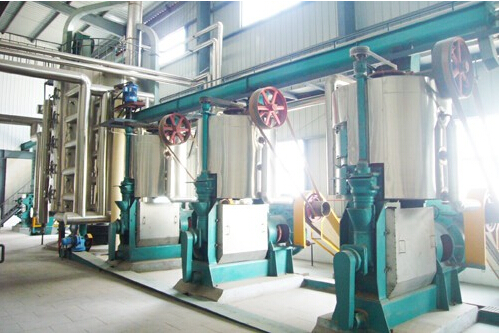1. The principle of puffing, drying and cooling
The extruded high-temperature and high-humidity material is de-watered and cooled by hot air convection in the extruded material cooler to meet the requirements of solvent extraction and oil extraction. The adjusted extruded material and the extruded overflow flake are used as an infusion material to enter the extraction workshop for extract and oil extraction.
The suitable moisture of the extruded material is 11-13% and the temperature is 110-120¡æ, while the suitable infiltration moisture is about 8-10% and the temperature is 58-62¡æ. In order to make the moisture of the expanded material meet the requirements of the oil extraction process, dry cooling is required in most cases.
2. Equipment structure and application for extrude drying cooler.
Common cooler include plate cooler and vertical cooler. The plate cooler is used to dry and cool while transport the material. The vertical cooler is used to achieve the counter current dry cooling of the material during the material drop process. The structure is compact and cover small area.
The vertical cooler is composed of a feed rotary valve, a machine cover, a material uniformizer, a cooling box, a hydraulic drive device, a discharge and reprint, a support and a blanking.
The extruded material fed by the closed-wind rotary feeder is evenly distributed in the box under the action of the uniform distributor and forms a material layer. At the same time, the air sucked from the fan through the lower side passes through the flap and the material layer, and the water in the material layer evaporates and the temperature was also reduced.
The dried and cooled materials are discharged into the discharge box under the action of automatic hydraulically controlled flap, and the moist air is drawn from the upper part of the casing by a fan.
The cold air enters from below, and the material that has been gradually cooled down will be discharged first, forming cold air contact with cold material, hot air contact with hot material, avoiding quenching of the material, and will not cause the surface hardening and cracking of the pellets and internal moisture, the phenomenon that heat cannot be emitted.
When the ambient temperature is low, the temperature of the expanded material after drying and cooling may be lower and not conducive to extraction. At this time, a hot air heater can be used. By adjusting the temperature of the hot air and the speed of the plate dryer cooler, the moisture and temperature of the immersion material can be controlled.

3. The operation control requirements of the puffing cooler
1) Control the air volume and hot air temperature (if using a heater, the hot air temperature is lower than 90¡æ),
The discharge speed and the thickness of the material layer ensure that the material level in the cooler is stable, and the discharge of each part is continuous and stable.
2) Note that the discharge flap and hydraulic cylinder run smoothly without loosening.
3) Pay attention to the proper opening of the discharge sluice plate of the reversing cooler to ensure the continuous and stable material entering the scraper to prevent sudden and large changes and affect the extraction production.
4) After cooling, the moisture of the material is 8-10%, and the discharge temperature is 58-62¡æ, to ensure that the moisture and temperature of the two coolers are consistent.
5) Keep the unloading and reversing plate closed before running, and the gap between the unloading and reversing plates is even more than 2mm without leakage.
6) The cooling box is well sealed.
7) The hydraulic oil level and pressure are suitable without leakage.
8) Regularly check and clean the air duct and purge the heat sink of the heater.
Website: https://www.ricebranoilpress.com
Email: info06@cnoilmachine.com
